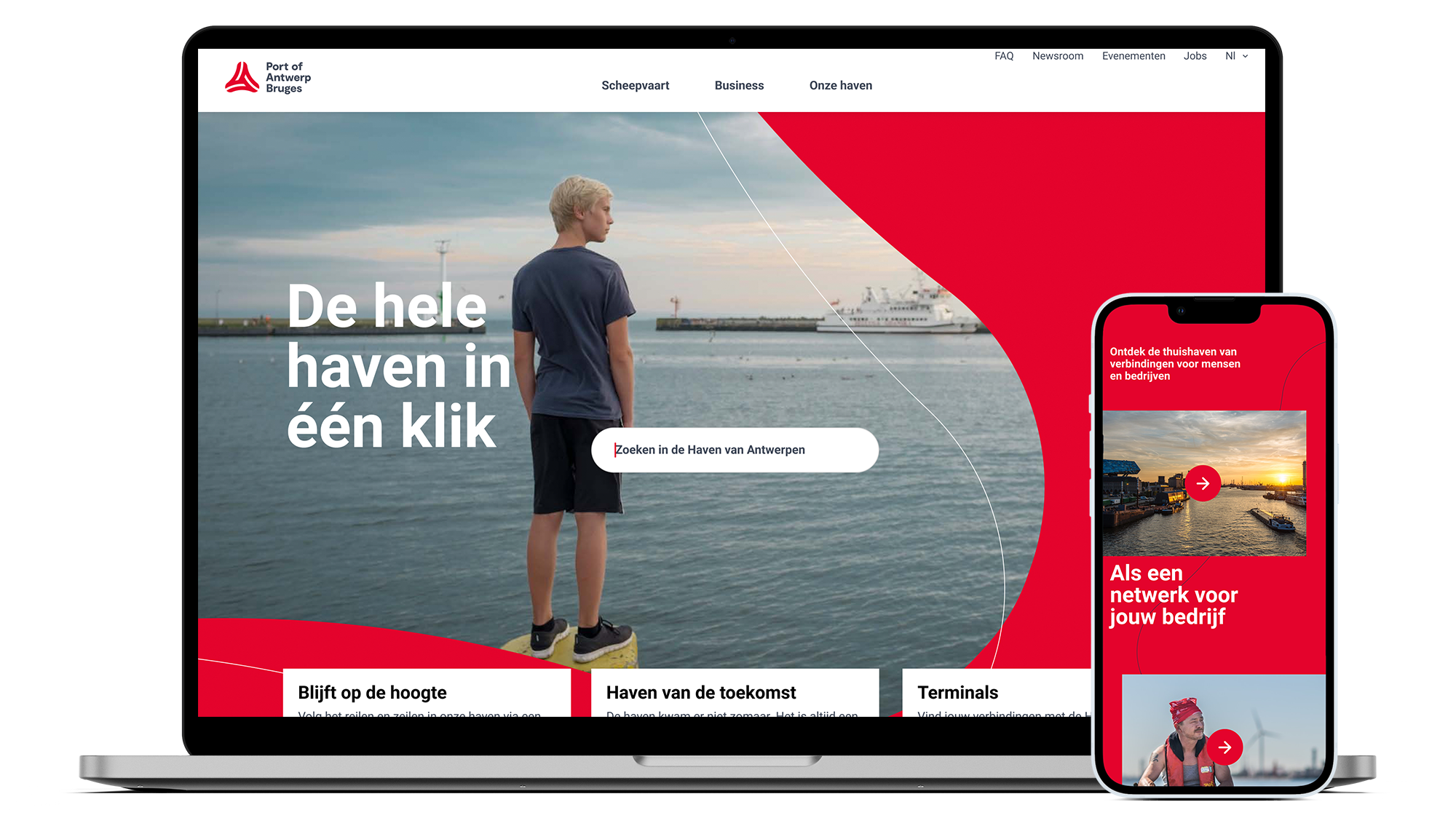Port of Antwerp-Bruges underscores merger with a new website

Port of Antwerp and Port of Zeebrugge are joining forces to become Port of Antwerp-Bruges. A port of this caliber has many stakeholders with different needs and expectations. Together with The Reference, Port of Antwerp-Bruges built an accessible website where everybody can find the information they are looking for quickly and accurately.
From companies and investors around the world to employees within the port area and local residents. The port provides a wealth of information for a variety of stakeholders. Putting all that information together in one place can quickly overwhelm visitors, which makes building a website for the port quite a challenge.
Next to this, the merger into Port of Antwerp-Bruges also has digital repercussions, especially in terms of bringing together content and technologies. Therefore, Port of Antwerp-Bruges was not only looking for a digital partner who could build a clear and accessible website, but also develop a future-oriented technology architecture.
To help visitors find relevant information quickly, The Reference came up with a UX concept that is driven by a strong search function. This way they avoid visitors having to click endlessly through menus and web pages before they finally reach content that is relevant to them. To make this idea work, The Reference also created an innovative design that supports the well thought out information architecture in addition to an accessible user experience.
With agility and a future-proof vision in mind, it soon became clear that a composable technology architecture as the basis for this website would greatly benefit Port of Antwerp-Bruges. It allows the port to bring together hand-selected tools and technologies into a single platform that suits the organization perfectly. It offers Port of Antwerp-Bruges the flexibility to integrate existing and future applications into their digital environment, which comes in handy in merging the different tools, platforms and systems of both ports as they transition into one organization.
In this project, headless Drupal takes a central role as the content management system. On the front-end side we opted for Next.js. All digital assets, such as videos and images, are loaded in via Bynder (a digital asset management platform). The search tool Algolia is a crucial element in this architecture because of its extremely powerful search functionalities.
"We are proud and happy with the beautiful website that we developed together with The Reference," says Nathalie Van Impe, Chief Communication & Marketing Officer at Port of Antwerp-Bruges. "The Reference’s team was able to understand very well the needs of our organization that communicates with a wide range of stakeholders. In addition, they challenged and advised us on our future-oriented technology architecture in a very pleasant way. This architecture is agile and allows us to quickly respond to changes in the market and demands from our customers and partners."
The new Port of Antwerp-Bruges website is now live and available via www.portofantwerpbruges.com.